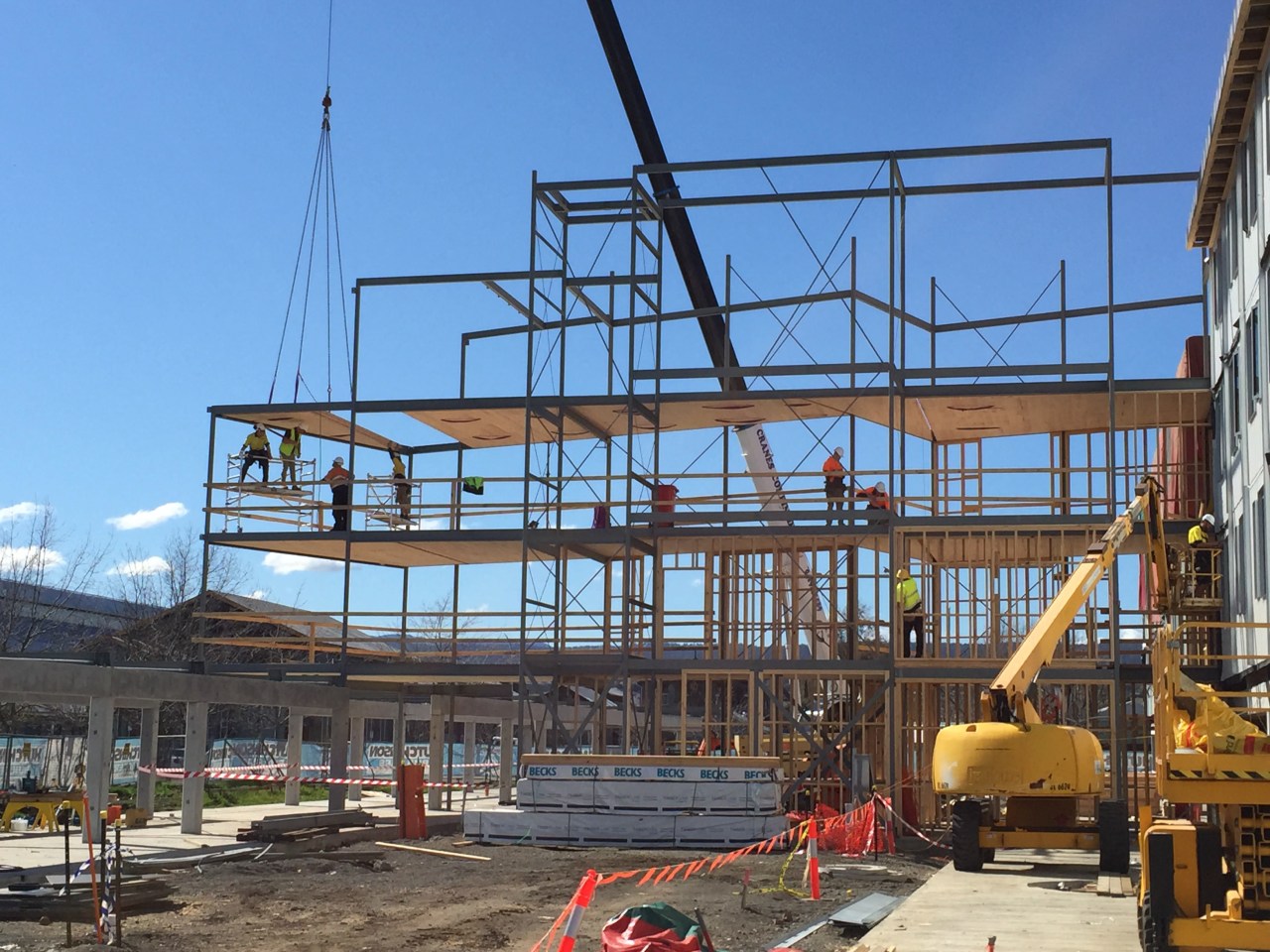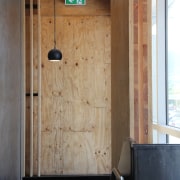Mass timber construction has proven benefits for commercial construction projects says architect Ian Jack
Laminated Veneer Lumber (LVL) and Cross Laminated Timber (CLT) are now viable alternatives to concrete and steel in commercial construction

Mass timber construction (MTC) is a building process which uses large sections of engineered wood for the primary building structure. Emphasise the word process. MTC is about much more than materials. It is a whole new way of thinking about construction.
Historically, within Australia and New Zealand, engineered wood products have mostly served the low rise residential sector. (The exception is long-span Glue Laminated Timber Glulam.) More recently, developments in re-engineering raw timber have brought Laminated Veneered Lumber (LVL) and Cross Laminated Timber (CLT) into the realm of commercial construction.
Along with Glulam, these products are now being used, either combined or individually, to compete with traditional steel and concrete in commercial buildings, or often to work effectively with them in hybrid structural solutions.
There are many drivers for mass timber buildings. Wood stores carbon. The most effective tool for carbon removal from the atmosphere is a tree and trees are renewable. Construction costs compete on labour savings. Building with off-site prefabricated mass timber components is faster, safer and more precise. Damage remediation in timber buildings is simpler. Wood has aesthetic appeal and proven health values. And the whole of life cycle costing is lower.
Building Costs
We know now that, for some building types, it can be more economical to build with mass timber.
In a 2015 report undertaken by the Australia Forest and Wood Processors Association (FWPA), research teams including Arup, AECOM, Studio 505, Fitzpatrick + Partners and Building Cost Information System (part of the Royal Institution of Chartered Surveyors) provided comparative costings for timber against more conventional concrete framed or steel framed buildings in an urban location.
Mass timber solutions were found to be cheaper than conventional steel and concrete framed construction by 12.4% for commercial buildings, 13.9% for aged care, 2.2% for apartments and 9.4% for portal framed industrial sheds. Building designs included analysis of heating, ventilation and air conditioning, facade and acoustic considerations.
Solutions were tested against available products, including CLT, LVL and Glulam, and existing supply chains for these products. No consideration was given to environmental benefits or life cycle savings. The report noted that other savings could be made on sites with poor ground conditions or where constrained access suited off-site prefabrication.

Developments in manufacturing and design
The speed-on-site advantage of MTC requires a high degree of off-site manufacturing precision, which has brought about strong investment by manufacturers in CNC technology. CAD/CAM software utilises designers' drawings to produce full 3D structural modelling of a building, to be then transferred to high-tech CNC machining centres, which shape very large mass timber components to millimetre accuracy.
Cross-laminated timber (CLT) has been slow off the blocks down under because of the need to ship large construction panels, sourced from Europe, half way around the world.
This situation changed with the establishment of a New Zealand manufacturing plant by XLam, which has to date supplied CLT floor, wall and roof panels to around 150 building projects, including some in Australia. XLam will commission a new plant in Australia in 2017, making CLT locally available to the Australian market.
The Canterbury earthquakes have lent impetus to mass timber buildings, which are much lighter than concrete and steel, and quicker and easier to remediate if damaged. CLT and LVL have been combined in lightweight shear walls with post tensioned anchoring and replaceable connections.
Problems with wet preservative treatment of LVL have been addressed through a new system of treatment via the glue lines, which gives full penetration and produces a dry structural product for site delivery or remanufacture.
Timber industry bodies continue to actively facilitate R&D, notably SCION in NZ and FWPA in Australia, which coordinates mass timber research on a wide front.
Universities have dedicated timber design faculties which are contributing to developments in connections, seismic engineering and composite structural solutions including post-tensioning. Timber technology emanating from University of Canterbury research is now being disseminated worldwide.
Codes and regulations

It's been a long time coming, but finally we are seeing national and local government responding to both environmental concerns and the intensive industry effort to substantiate the use of mass timber in commercial buildings. In a huge step forward, as from May 2016 the Australia National Construction Code now enables timber buildings of up to 25 metres tall to be considered as a "Deemed to Satisfy" solution. This will greatly strengthen the case for use of massive timber.
June 2015 saw the Australian Local Government Association pass a resolution supporting the use and promotion of timber products by Local Government across Australia.
To date, six councils in Australia and one in New Zealand have formally adopted Wood Encouragement policies, recognising the economic value of the timber industry and the contribution made by sustainably sourced wood and wood products to reducing carbon footprint.
Further, Australia's Green Star Rating Program now offers more points for the use of recycled and sustainably harvested wood.
Market potential
Research on prospects for MTC in Australia published by the International Wood Products Journal suggests a positive future for the sector in offices, commercial, accommodation, education, health and recreation buildings.
When houses and multi-residential are added, a 2017-2018 market penetration range from 5-15% would give mass timber content values of $105M-$306M. The report acknowledges that this is a snapshot review of an industry still finding its place. However the percentages do not seem unrealistic in the medium term.
While the New Zealand economy is much smaller, mass timber has a head start. Like Australia, New Zealand is seeing strong activity in medium density housing and aged care facilities. In the aged care sector alone, the Retirement Villages Association reports a development pipeline of 6-7000 units in over 50 villages.
Story by: Trendsideas
Home kitchen bathroom commercial design
Diving into nature
Personality plus
Classic looks, contemporary efficiency
AU Commercial Design Trends Vol. 32/02C
Commercial Design Trends is aimed at our professional readers, and showcases commercial buildings. The book features reg...
Read More





